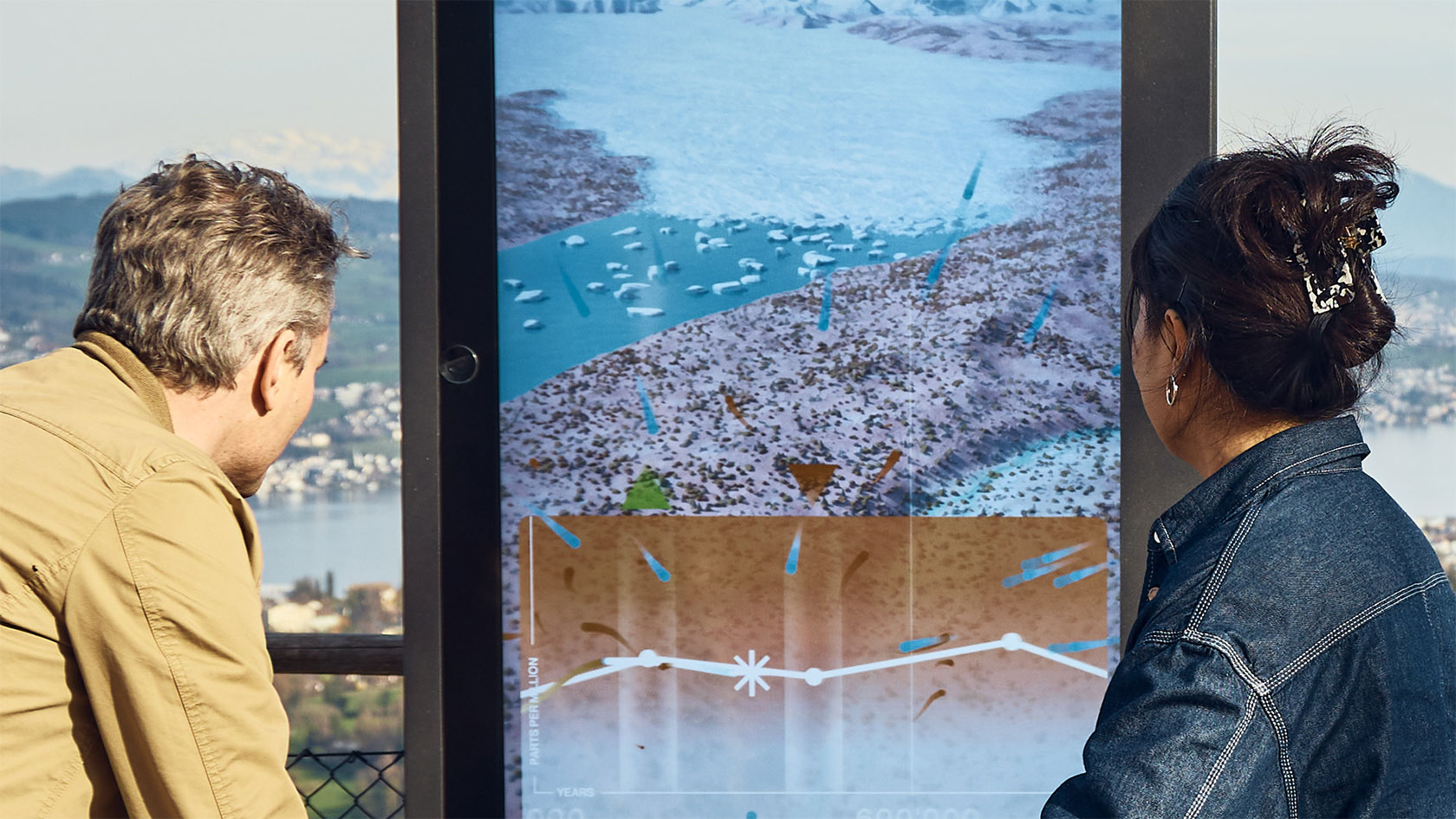Navigation auf uzh.ch
Navigation auf uzh.ch
It is well known that Alpine glaciers are retreating due to the rise in global temperatures. Most people no longer dispute that human behavior is responsible for current and future climate change. Nevertheless, some critics and skeptics try to downplay the connection, with claims like “there have always been temperature fluctuations”, “the glaciers used to be smaller than they are today” or “the next ice age is sure to come”.
“Such claims are not entirely false, but they must be understood in the context of today’s rapid climate change,” says UZH glaciologist Andreas Linsbauer. This is where the IceAgeCam, an Agora project funded by the Swiss National Science Foundation, comes in. The IceAgeCam is a new installation at the Felsenegg lookout point which aims to correct misconceptions about climate change in a simple way. It is the result of an interdisciplinary project by researchers from the Universities of Zurich and Lausanne and the Zurich University of the Arts (ZHdK).
Situated on the panoramic terrace of the Felsenegg restaurant, the IceAgeCam looks out over lake Zurich and across to the Alps in the distance. The landscape visible from here owes its shape to the formative influences of the great ice age glaciers, making the Felsenegg a good location for the installation.
The installation consists of a large-format screen flanked by two pumps that control the interactions. Users press the pump handles to start a game in which they change the proportion of greenhouse gases (CO2) in the atmosphere by pressing the pumps, and progress along a timeline starting from 800,000 years ago, moving through the present day and on into the future. The IceAgeCam uses scientific prognoses to map possible future scenarios up to the year 2100. In addition to the three-dimensional panoramic view, visitors can also watch a bird’s-eye animation of the Alps over the last ice age cycle.

Global temperatures are closely correlated with the proportion of greenhouse gases (CO2) in the atmosphere. By raising or sinking CO2 levels with the pumps, users see the changes in the landscape caused by glaciers retreating or advancing over the last million years due to natural climate fluctuations. For example, they see how the area around Lake Zurich was completely covered in ice during a cold period and was then once again completely free of ice and became revegetated during a warm period. In contrast to these natural changes, the game illustrates the abrupt human-made rise in CO2 levels exceeding historical records – a visual testimony to the accelerated pace of current climate change.

“Our aim is to draw attention to this rapid and extreme increase and to demonstrate that such fast developments have not been seen in the last million years,” explains Linsbauer. “The aim is to introduce members of the public who may be less well informed to complex topics by converting them into a short, understandable experience.” Felsenegg offers the ideal setting for the installation as it has enough space, a great view and is easily reached from the city. The experience is complemented by an integrated camera with which visitors can take selfies in front of a backdrop of glacial landscapes.
The IceAgeCam simulations are based on research conducted by the Department of Geography at UZH and the Institute of Earth Surface Dynamics at the University of Lausanne (see box). The model used simulates the interactions between the climate and glaciological processes. In order to translate this data into visually impressive, high-resolution, satellite-like images, a team led by Guillaume Jouvet, glaciologist at the University of Lausanne, developed a generative deep-learning model. The animation design and the creation of the images were developed and implemented by ZHdK designers from the team of Niklaus Heeb, head of knowledge visualization.